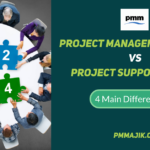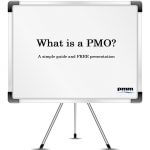The standard function of a project management office (PMO) is to get projects delivered on time and on budget, but is that all a PMO is good for? Like every area of a business, a PMO needs to make a tangible contribution.
This will lead you to ask “What’s the value of a PMO?” To understand this, we need to look at a few different areas, such as:
- What can a PMO add to a business or organisation?
- How can the success of a PMO be measured?
- What activities does a PMO do to add value to a business?
Making sure your PMO is effective and is able to justify its existence by demonstrating success.
What value can a PMO add to a business?
We need to first understand the different types of value. Although instinctively we may assume monetary value, we need to consider that PMOs exist in the public sector, too.
There are three key areas where a PMO can add value to an organisation, broadly speaking. These are:
- Value for money by adding to the bottom line of delivering cost savings.
- Achieving strategic objectives to drive the organisation forward and work for its success.
- Benefits delivered for colleagues, users, and consumers that are intangible.
How each organisation defines the value required of its PMO will be dependent on factors such as the remit and style of the office and what the board requires in terms of KPIs.
What measures can be implemented to understand the value of PMO?
Measuring the value of a PMO will depend on the factors noted above. Understand which KPIs to put in place and exactly how they’ll be measured will let you know your PMO is being successful.
There are standard measures that can be looked at, such as how many projects come in on time, on budget, and the level of stakeholder satisfaction at the end. These are the types of KPIs that relate directly to the value for money metric. Return on investment in financial terms should be easy to measure.
Every organisation will have a different set of strategic objectives. These objectives can provide KPIs for the PMO. An example of a KPI in this sphere could be “to increase skill level of all project colleagues” which would align with a strategic objective to decrease staff turnover and increase satisfaction.
Measuring the benefits delivered by a PMO is challenging because benefits can be intangible and felt over a long period of time. Implementing new HR software might have an immediate cost impact but the benefits to employees could be more of a slow burn. The PMO needs to define the intended benefits of each project and find a way to measure them.
How can a PMO add value to an organisation?
There are key attributes of a PMO that will allow it to create value in an organisation. These should be readily identifiable in your PMO and may help you understand where to start looking for your KPIs.
- Predictability in projects by providing clear frameworks and keeping them aligned to their timelines
- Accountability by defining project roles and reporting lines
- Alignment to the strategic objectives of the organisation through monitoring outcomes
- Organisational learning to understand pinch points in projects and smooth them for the future
- Resilience through business continuity planning
- Consistency by rolling out best practices and ensuring processes and procedures are followed
- Visibility of projects and outcomes to the board and other leaders through strong reporting
- Transparency in reporting and auditing projects and providing access to data points
- Quality maintenance of projects from having achievable requirements to producing useful outcomes
- Assurance of processes and systems
The take home
In the last decade, PMOs got a reputation as being a trend that never took off, with a large proportion of them getting set up and then closed down within four years. It’s likely that this happened when it was asked, “what’s the value of the PMO?” and there was no ready answer. With a strong understanding of the expectations of a PMO and the functions it will complete, you can measure the value your PMO contributes to your organisation. Fixing KPIs to align with the business objectives will ensure leaders can identify what your PMO contributes.






